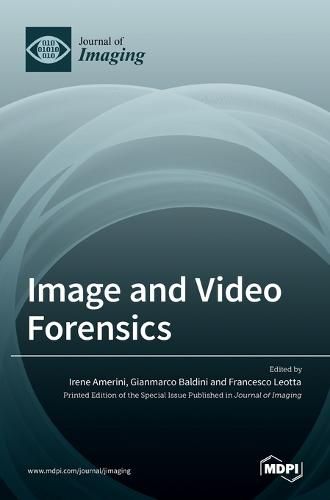Readings Newsletter
Become a Readings Member to make your shopping experience even easier.
Sign in or sign up for free!
You’re not far away from qualifying for FREE standard shipping within Australia
You’ve qualified for FREE standard shipping within Australia
The cart is loading…






This title is printed to order. This book may have been self-published. If so, we cannot guarantee the quality of the content. In the main most books will have gone through the editing process however some may not. We therefore suggest that you be aware of this before ordering this book. If in doubt check either the author or publisher’s details as we are unable to accept any returns unless they are faulty. Please contact us if you have any questions.
Nowadays, images and videos have become the main modalities of information being exchanged in everyday life, and their pervasiveness has led the image forensics community to question their reliability, integrity, confidentiality, and security. Multimedia contents are generated in many different ways through the use of consumer electronics and high-quality digital imaging devices, such as smartphones, digital cameras, tablets, and wearable and IoT devices. The ever-increasing convenience of image acquisition has facilitated instant distribution and sharing of digital images on digital social platforms, determining a great amount of exchange data. Moreover, the pervasiveness of powerful image editing tools has allowed the manipulation of digital images for malicious or criminal ends, up to the creation of synthesized images and videos with the use of deep learning techniques.
In response to these threats, the multimedia forensics community has produced major research efforts regarding the identification of the source and the detection of manipulation. In all cases (e.g., forensic investigations, fake news debunking, information warfare, and cyberattacks) where images and videos serve as critical evidence, forensic technologies that help to determine the origin, authenticity, and integrity of multimedia content can become essential tools.
This book aims to collect a diverse and complementary set of articles that demonstrate new developments and applications in image and video forensics to tackle new and serious challenges to ensure media authenticity.
$9.00 standard shipping within Australia
FREE standard shipping within Australia for orders over $100.00
Express & International shipping calculated at checkout
This title is printed to order. This book may have been self-published. If so, we cannot guarantee the quality of the content. In the main most books will have gone through the editing process however some may not. We therefore suggest that you be aware of this before ordering this book. If in doubt check either the author or publisher’s details as we are unable to accept any returns unless they are faulty. Please contact us if you have any questions.
Nowadays, images and videos have become the main modalities of information being exchanged in everyday life, and their pervasiveness has led the image forensics community to question their reliability, integrity, confidentiality, and security. Multimedia contents are generated in many different ways through the use of consumer electronics and high-quality digital imaging devices, such as smartphones, digital cameras, tablets, and wearable and IoT devices. The ever-increasing convenience of image acquisition has facilitated instant distribution and sharing of digital images on digital social platforms, determining a great amount of exchange data. Moreover, the pervasiveness of powerful image editing tools has allowed the manipulation of digital images for malicious or criminal ends, up to the creation of synthesized images and videos with the use of deep learning techniques.
In response to these threats, the multimedia forensics community has produced major research efforts regarding the identification of the source and the detection of manipulation. In all cases (e.g., forensic investigations, fake news debunking, information warfare, and cyberattacks) where images and videos serve as critical evidence, forensic technologies that help to determine the origin, authenticity, and integrity of multimedia content can become essential tools.
This book aims to collect a diverse and complementary set of articles that demonstrate new developments and applications in image and video forensics to tackle new and serious challenges to ensure media authenticity.